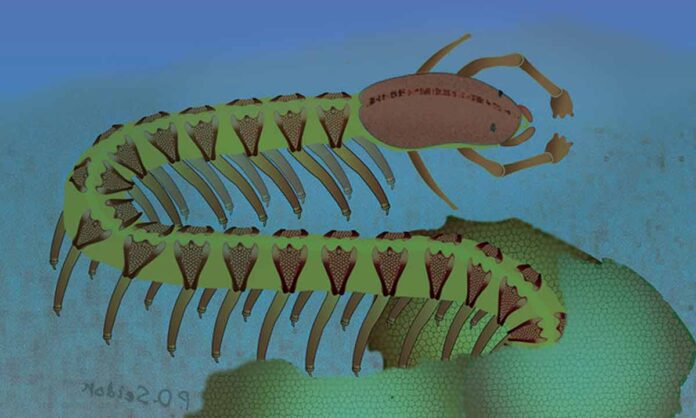The Institute of Psychiatry, Psychology, and Neuroscience (IoPPN) at King’s College London, in collaboration with the University of Arizona (UoA), has solved a century-old debate about how arthropod brains evolved over the course of more than 500 million years.
The study, published in Science, was co-led by Dr Frank Hirth of King’s IoPPN and Professor Nicholas Strausfeld of the University of Alabama. It settles a long and contentious debate about the origin and composition of the brain in arthropods. It is the most species-rich phylum in the animal kingdom, which includes insects, crustaceans, spiders, and other arachnids. As well as other lineages such as millipedes and centipedes.
The new study delves into the fossilised remains of Cardiodictyon catenulum, an armoured lobopodian.
The sample could not be x-rayed due to the size of the fossil, which measured about 1.5cm in total. Instead, the researchers used “chromatic filtering” of high-resolution digitalized images to filter out light at different wavelengths. The technique revealed a segmented nervous system in the animal’s trunk. And a brain in an unsegmented head with three confluent domains.
The researchers compared the fossil’s head and brain morphology to that of other known fossils and living arthropods. They discovered a cerebral ground pattern. It has persisted from the Cambrian period 525 million years ago to the present. It combined detailed paleomorphological analysis of the fossil with known gene expression patterns of living arthropods. “We have identified a common signature of all brains and how they formed,” Dr. Hirth continued. We discovered that, each brain domain and its corresponding features are determined by the same set of genes. This identifies a common genetic blueprint for the formation of a brain.”
Hirth and Strausfeld speculate that the morphological and genetic interpretations described in their study. It may apply to creatures other than arthropods and their close relatives. This has important implications when comparing arthropod nervous systems to vertebrate nervous systems. These have comparable architectures in which the forebrain and midbrain are genetically and developmentally distinct from the trunk’s spinal cord, they said.
According to Professor Strausfeld, their findings also provide a message of continuity. Then the planet is changing dramatically due to climatic shifts.
“Major geological and climatic events were reshaping the planet. Simple marine animals like Cardiodictyon gave rise to the world’s most diverse group of organisms, the euarthropods. It eventually spread to every emergent habitat on Earth but are now threatened by our own ephemeral species.”

